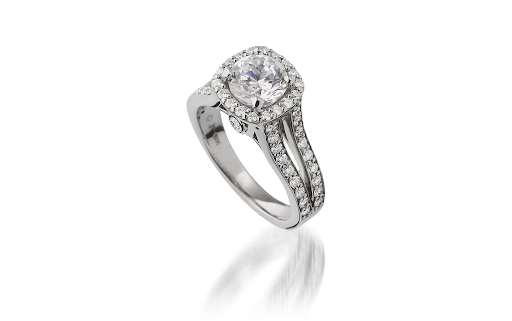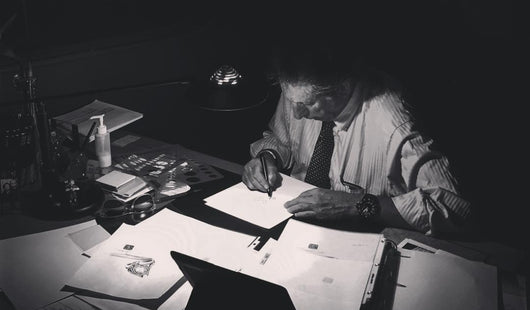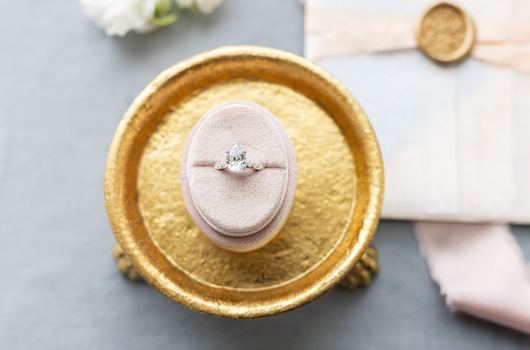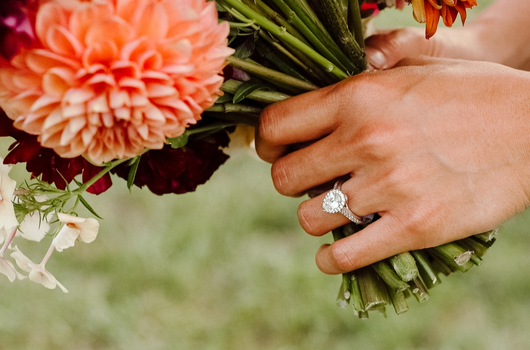How to Choose an Engagement Ring Setting

Selecting the right ring setting is one of the most critical steps in purchasing an engagement ring for your fiancé-to-be. In addition to determining how the ring will look, the setting will ultimately help determine what type of diamond you will buy. Here’s how to choose a setting that will turn your engagement ring into a uniquely personal symbol of everlasting love.
What Is an Engagement Ring Setting?
The term “setting” refers to how gemstones are mounted, or set, into precious metal bands. An engagement ring’s setting should highlight the beauty of a diamond while reflecting the personality of the wearer. Style refers to the overall design aesthetic the setting helps create—whether it’s a halo, solitaire or three-stone.
What Are the Different Types of Engagement Ring Settings?
Engagement ring styles can vary significantly in personality and appearance, and it all begins with the setting. Some styles are simple, light and elegant, making them ideal for women who appreciate simple, timeless beauty. Others are more decorative and eye-catching, with halo or pavé diamonds and engravings that enhance the ring's beauty. Still, others are made with durability in mind, making them great for busy, active, and outdoorsy women, or those who work with their hands.
As a seasoned jeweler and skilled artist, John Atencio brings a unique perspective to the design and crafting of each engagement ring, so the ring perfectly fits each stone. To better understand this distinct approach, it helps to know a few basics about available ring settings.
When it comes to choosing a setting, there are several options available, including:
- Prong Setting & Solitaire Setting
- Bezel Setting
- The Tiffany Setting
- Channel Setting
- Halo Setting
- Tension Setting
- Tension Style Setting
- Bar Setting
- Pavé Setting
- Flush Setting
- Cathedral Setting
- Three-Stone Setting
- Cluster Setting
- Antique/Vintage Setting
- Eternity Band
- Infinity Setting
- Shank/Split-Shank
While this may seem like an overwhelming selection, it's helpful to think of every available setting in two categories: rub-over (or bezel) or claw (or prong). Most—but not all—settings are some variation of these two basic types.
The most common and classic ring setting is a prong setting, which involves a minimum presence of metal, which spotlights the diamond more prominently, allowing more light to interact with the gem resulting in greater sparkle.

In rub-over settings, the diamond’s perimeter is surrounded by a metal casing, making them ideal for more “hard-wearing” or active women.
In addition to protecting stones better, bezel settings can disguise inclusions and other flaws more effectively. The downside is that it can make a diamond look less sparkly and smaller than it actually is; although, if it's set higher on the band, this can help correct the issue.
Once you've narrowed things down to the general aesthetics of bezel vs. prong, you can dive deeper into your available options. This might mean choosing a simple but timeless solitaire or a six-prong Tiffany setting with its famous "floating" effect. It may mean falling in love with a Cathedral setting, with its arches of metal, a Three-Stone setting which incorporates multiple diamonds, or a Split-Shank, which includes negative space alongside the diamond, allowing for a subtle silhouette that still feels classic.
Whatever the case, the setting should be suited to your diamond and the unique style of your fiancé-to-be. With so many options available, it can help to seek counsel from seasoned jewelry experts who understand the intricacies behind choosing the right setting that will complement your diamond selection and raise eyebrows for all the right reasons.
With most ring settings commonly found elsewhere, you can simply drop a stone into the setting, regardless of scale, because it’s the easiest approach. At John Atencio, every engagement ring is crafted to be an artistic love story, made to stand-out. It begins with a uniquely inspired, hand-sketched design and ends with a flawless piece of artistry.
As you may be starting to see, choosing the right jeweler is a huge part of choosing the right setting for your ring.

How to Choose a Diamond Ring Setting
To achieve a beautiful, balanced look for your ring, you should choose a mounting with the carat weight of your engagement diamond in mind. If the mounting is too large, wide or thick for the diamond, the setting will overpower the gem, making it appear disproportionately small.
On the other hand, if your mounting is too small for the diamond, the ring will seem out of proportion and displeasing to the eye. An oversized diamond can also cause the entire piece to be out of balance and shift on the finger. Ideally, you want a flawless harmony between the size of the diamond and the setting. You also want to choose a setting that will suit the wearer’s individual taste, style and lifestyle. This can be difficult without guidance from a jewelry expert.
John Atencio takes a distinct approach to settings, designing each ring around the center stone—from a 3⁄4 carat to 2 carat—scaling up the entire ring to maintain the dimensions and general aesthetic. The result is a perfectly balanced design that sets the gem and ring in a harmonious union based on the unique taste and lifestyle of your bride-to-be.
Although choosing the right setting can be overwhelming, your experience needn’t feel that way. At John Atencio, our engagement ring experts can show you how to choose a perfect diamond and setting for your special someone. Visit one of our locations and let our knowledgeable experts guide you toward the perfect ring for your one-of-a-kind love story.
Listen to our podcast episode on what to look for in an engagement ring.


